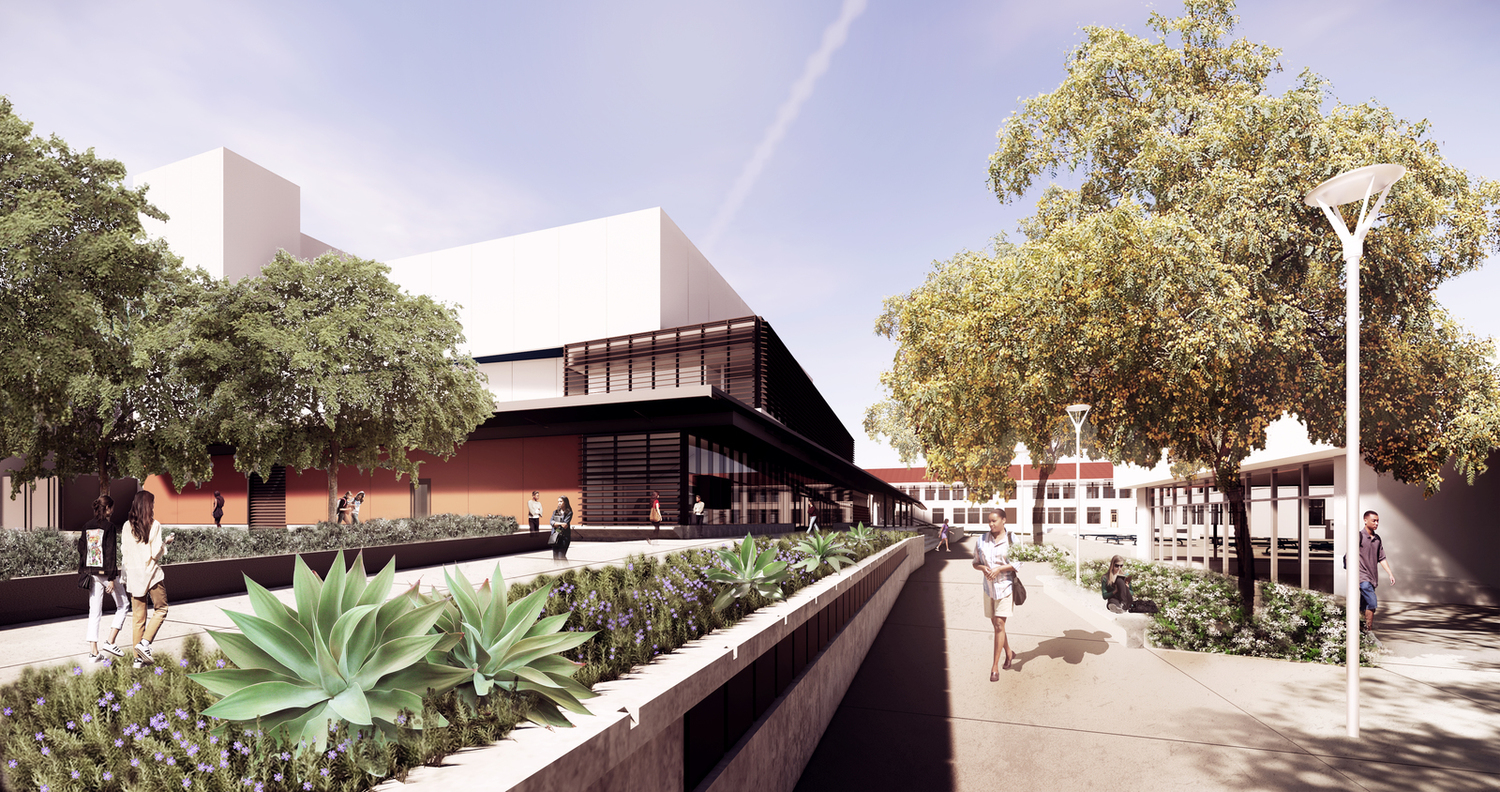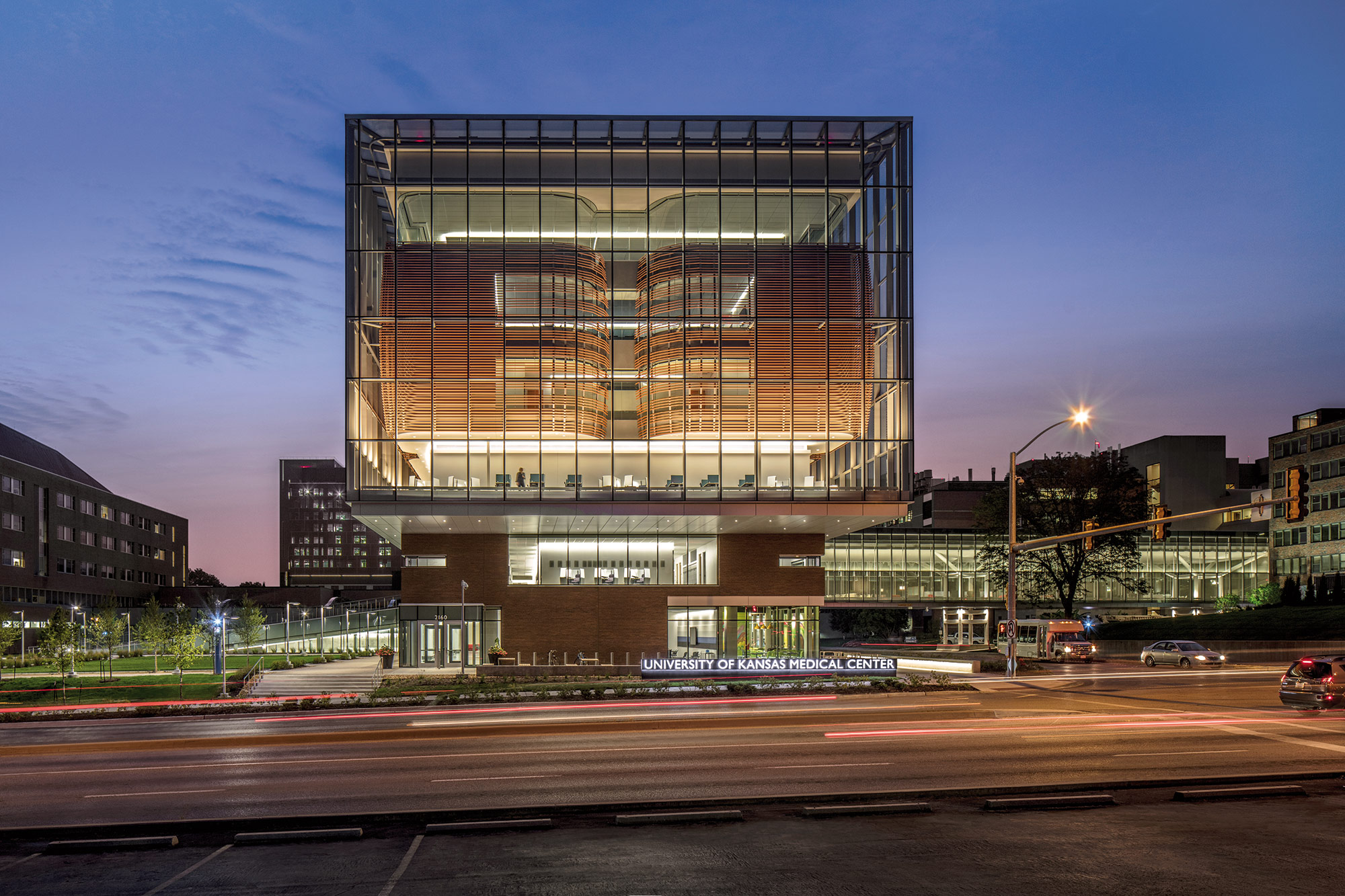North Hollywood High School – Shadowing and Designing with Empathy

By Fabian Kremkus
The design team departs on a journey of discovery to inform the design of the modernization and addition to LAUSD’s North Hollywood High School, deploying human-centered design methods that build a deep understanding, trust and empathy as the foundation for the design of the new campus.
At the onset of the conceptual design for LAUSD’s North Hollywood High School, the entire team spent several days at the campus to observe and shadow different teachers, the coach, the assistant principal and students to familiarize themselves with the campus life and the various teaching environments.
We all learned different things that we exchanged once we regrouped in the office. A wide range of different experiences and observations than we could have imagined came to light.
I was there to shadow Carrie Schwartz, who at that time was the assistant principal (AP) and chair for the special education program at North Hollywood High School. In addition to shadowing Carrie, I sat through a chemistry class to get the full-circle impression of how teaching is conducted and how students interact.

This eye-opening experience informed me of the current curriculum and learning process. It has been a while since I have been to high school, and I never knew what passive learning looked like until I sat in on a class. Passive learners may quietly absorb information and knowledge without typically engaging with the information received or the learning experience.
The life of Carrie Schwartz involves a kaleidoscopic set of tasks, starting at 7am and often extending into the evening with extracurricular school activities taking up time beyond the regular workday. The tasks ranged from counseling staff, administrative reporting, staff meetings, and checking up on students and teachers in the special education program to directing student supervision during recess. It was fascinating to witness how Carrie was able to do about 20 different things during the workday, always maintaining an encouraging, funny, personable attitude towards all the people she encountered. One could tell that the people she interacted with had a rapport and trust with her that springs from the radiating engagement that her daily routine provided. The amount of walking Carrie did throughout the day was also astounding. The campus has the bucolic setting of a small Spanish-style college campus. The ample green space and separation between the buildings takes time to traverse, but also offers the opportunity for spontaneous encounters.
What did I learn from shadowing Carrie? This greatly varied from simple practical improvements to a metaphysical level of understanding of an educator’s needs and desires.
For safety reasons, one of the doors of the classroom and administration building must be kept open during the day. This door had to be supervised during recess and Carrie had to stand by the door to make sure students would not sneak out unless they had special permission. This flawed setup needed to be addressed in the future design to offer an exit that did not need extra supervision and could save time for the staff. We were able to address this by introducing additional exit into the courtyard.
I also witnessed how Carrie used her office. It was more of a conference room with her desk in it, but much smaller than conference room. At one moment, I had to step out because there were six people in her 150-sf office – too crowded to accommodate the observer. When designing the modernization, CO implemented additional meeting areas next to the office.
Many details were discovered and flowed into the design of the renovation, new buildings and landscape. The biggest discovery was that this process reinforced that we cared about the students, teachers, administrators and maintenance staff. They trusted us with the proposed solutions and engaged in dialogue that was constructive and inspirational. The biggest lesson I learned is how important it is to create schools that are nurturing and inspiring to the students and staff, and rooted in the culture of the community.
Due to today’s current health crisis, it is not possible to become part of school life for now and in the near future. This makes it challenging for how we design today and tomorrow. We now rely on remote meetings, multiple site visits and virtual interviews to understand and develop empathy for the history, people and place of a project, a stark contrast to what we learned from this irreplaceable experience.
It is just so fortunate to have had this experience. On our next K-12 project, we are drawing on what we have learned from designing North Hollywood High School and will continue to enrich our repertoire with open minds to discover new means of engaging with students and educators to help facilitate innovative design solutions


